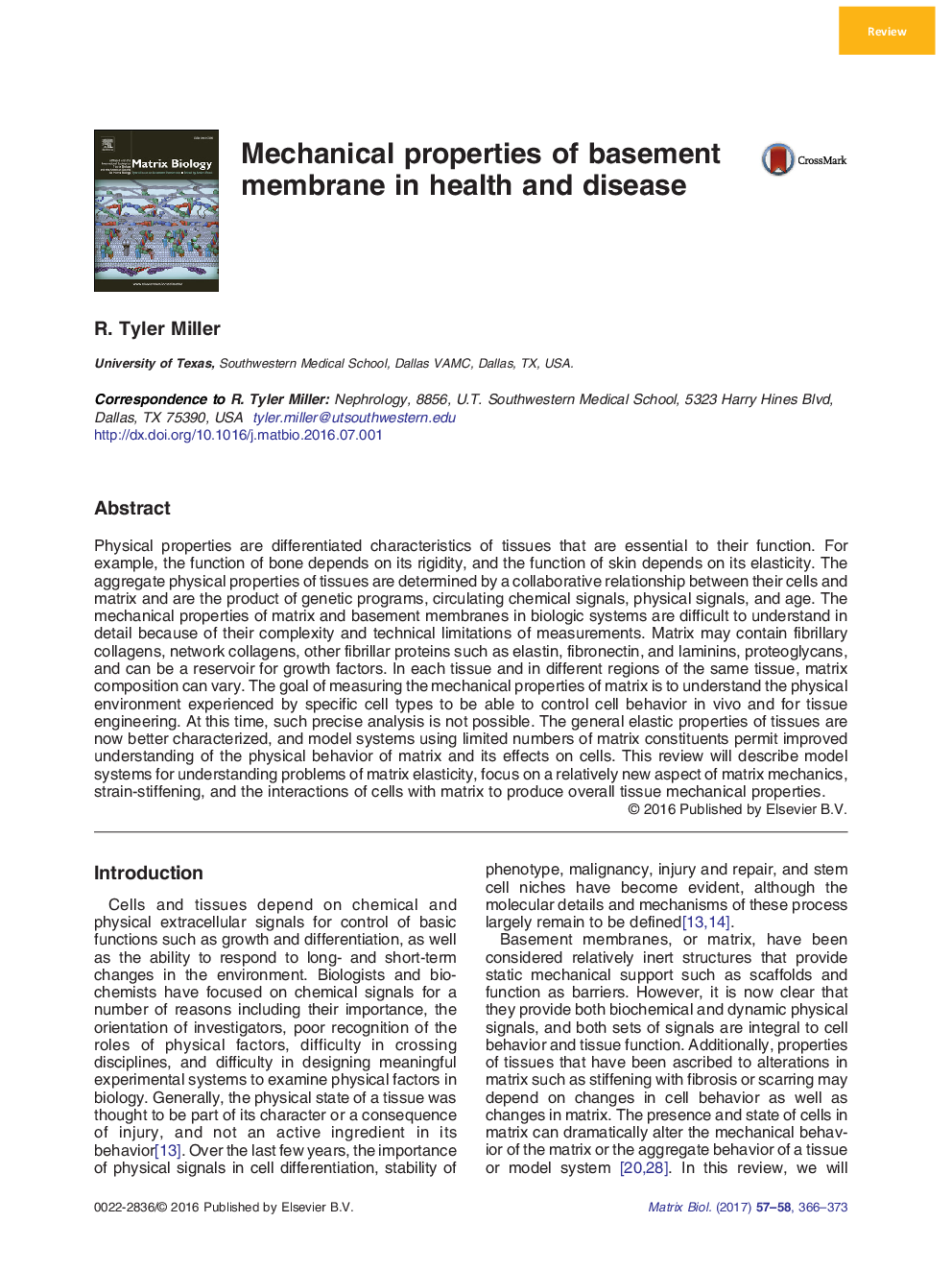| کد مقاله | کد نشریه | سال انتشار | مقاله انگلیسی | نسخه تمام متن |
|---|---|---|---|---|
| 5528541 | 1548003 | 2017 | 8 صفحه PDF | دانلود رایگان |
- Matrix is a complex mixture of fibers that may include collagens, laminins, proteoglycans, and other components that are highly cross-linked.
- Advances in the ability of measure the mechanical properties of tissues and matrix coupled with improved model systems have resulted in experimental systems that approximate biologic systems.
- Cross-linking results in a matrix characteristic termed “strain-stiffening”, which means that the resistance to deformation increases non-linearly with progressive deformation.
- Strain-stiffening of matrix makes it possible for cells to exert mechanical effects such as activation of TGF-β, over considerable distances.
- Although matrix stiffness generally corresponds to the stiffness of a tissue, increasing numbers of examples are being described in which the adhesive and other structural properties of cells interact with matrix to determine the overall mechanical properties of a tissue.
Physical properties are differentiated characteristics of tissues that are essential to their function. For example, the function of bone depends on its rigidity, and the function of skin depends on its elasticity. The aggregate physical properties of tissues are determined by a collaborative relationship between their cells and matrix and are the product of genetic programs, circulating chemical signals, physical signals, and age. The mechanical properties of matrix and basement membranes in biologic systems are difficult to understand in detail because of their complexity and technical limitations of measurements. Matrix may contain fibrillary collagens, network collagens, other fibrillar proteins such as elastin, fibronectin, and laminins, proteoglycans, and can be a reservoir for growth factors. In each tissue and in different regions of the same tissue, matrix composition can vary. The goal of measuring the mechanical properties of matrix is to understand the physical environment experienced by specific cell types to be able to control cell behavior in vivo and for tissue engineering. At this time, such precise analysis is not possible. The general elastic properties of tissues are now better characterized, and model systems using limited numbers of matrix constituents permit improved understanding of the physical behavior of matrix and its effects on cells. This review will describe model systems for understanding problems of matrix elasticity, focus on a relatively new aspect of matrix mechanics, strain-stiffening, and the interactions of cells with matrix to produce overall tissue mechanical properties.
Journal: Matrix Biology - Volumes 57â58, January 2017, Pages 366-373
